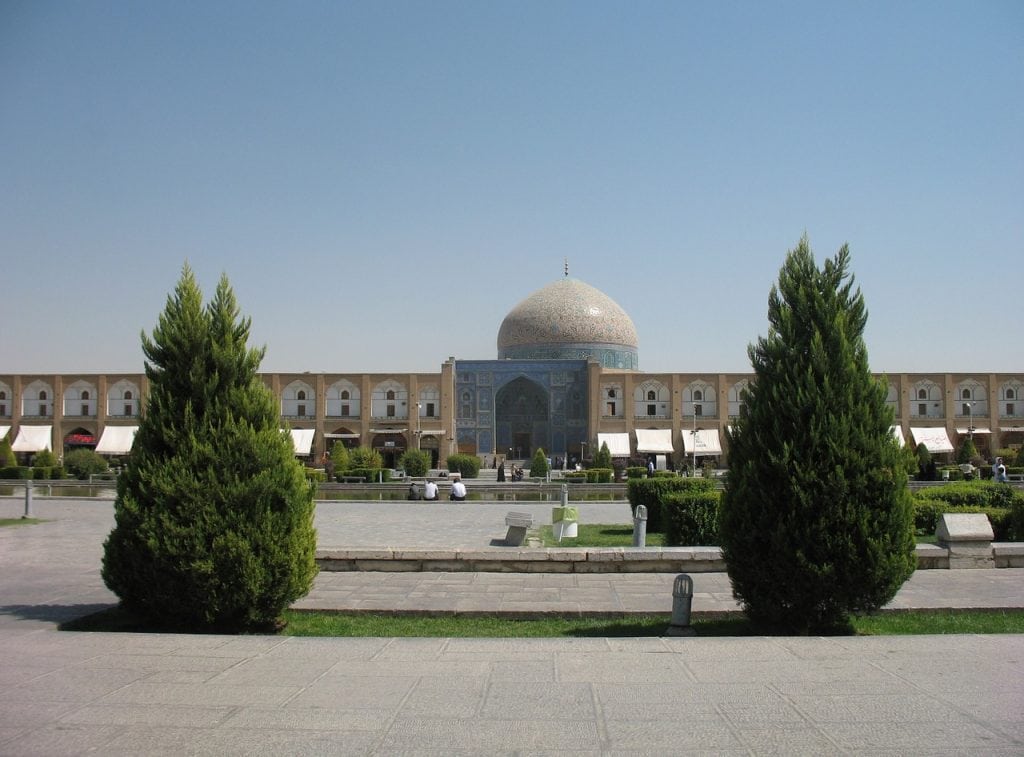Exploring Expansive and Historic Isfahan
See Half of the World through Isfahan
No other Iranian city will put your leg muscles to the test than Istafan would. Istafan is after all “half of the world” as the old Persian proverb goes. This 3rd biggest city of Iran is heavily peppered with Persian-Islamic architecture. Despite being one of Iran’s bustling, urbanized cities today, Istafan has a steady grip on these beautiful structures from the past.
Before you head to this city, plan to wear the most comfortable shoes you have. You’ll have plenty of sites to see, so be ready for a great journey.
Here’s a taste of you what you’ll see and experience:
 Imam Square
Imam Square
Have you seen a 20,000 rials banknote? If you have, the Imam Square would probably be familiar. It’s printed at the back of the bill. However, the almost monochromatic hues of the banknote do not give it justice. Spanning a total area of 89,600 square meters, Imam Square is alive with colors. Expertly landscaped, it has manicured lawns, gorgeous flowerbeds, and shaped trees.
But beyond its outer beauty, Imam Square is historically significant. Once upon a time, it served as a junction of Persia’s 3 main components of power, each represented by a nearby structure: Masjed-e Shah, the clergy; Imperial Bazaar, the merchants; Ali Qapu Palace, the ruler.
Chehel Sotoun
In Persian, Chehel Sotoun translates to “Forty Columns.” It’s a nod to the twenty pillars supporting the pavillion which reflect on the water’s surface. The reflection together with the actual pillars make up the “forty”.
During the reign of Shah Abbas II, the seventh king of the Safavid era, Chehel Sotoun was the venue of formal receptions for ambassadors and dignitaries.
Khaju Bridge
Known as the “finest bridge” in the city, Khaju Bridge is 133 meters long, 12 meters wide, and has 23 arches. Structurally, it serves as bridge and a weir. But during its heyday, the Khaju Bridge also served as a place for public meetings.
Vank Cathedral
Constructed in 1606, the Vank Cathedral, also known as, the Church of the Saintly Sisters, served as the house of worship of Armenian deportees during the Ottoman War. From the outside, it may seem plain but once you step inside, it’s bound to leave a mark on you.
Frescos, paintings and gilded carvings cover almost every inch of its interior. The upper section of the wall depicts the life of Jesus Christ; the lower section illustrates the persecution and suffering of Armenian martyrs.
Qaisarieh Bazaar
After long walks and hours of sightseeing, it might be a good time to do some shopping. The Qaisarieh Bazaar is the perfect place to be. Also known as the Grand Bazaar, it’s not only a shopper’s heaven but it’s also a notable historical site. Built in the 11th century, it was a major center of commerce of the Safavid period.
Imam Square, Chehel Sotoun, Khaju Bridge and Vank Cathedral are just a few of the wonderful must-see sites of Istafan. There are still more palaces, mosques, cathedrals, bridges, and bazaars to visit. Get your fill of Persian-Islamic architecture and sign up now for an Iranian Tour.
